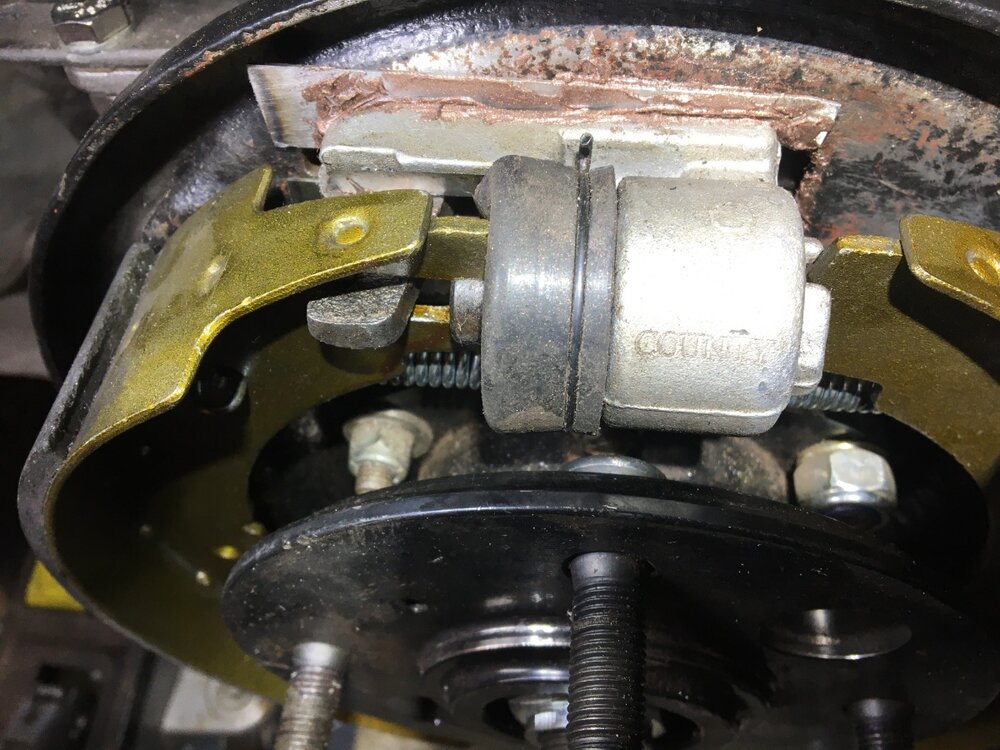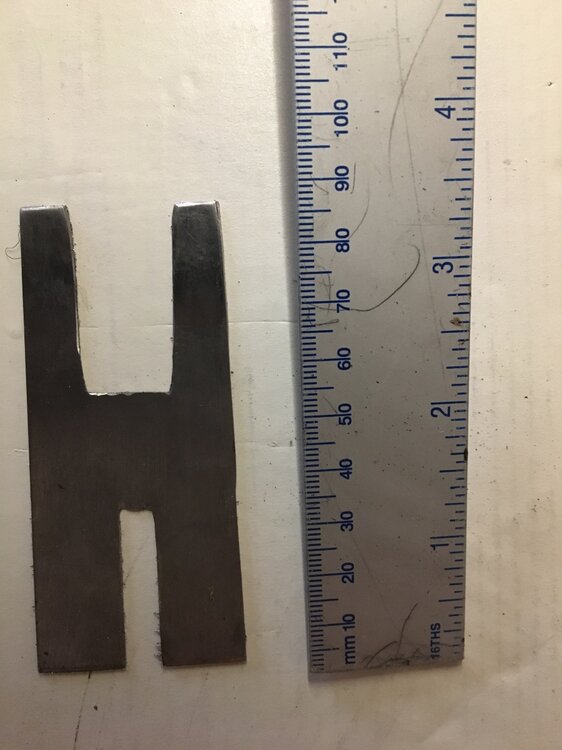
Pontious
-
Content Count
27 -
Joined
-
Last visited
Content Type
Profiles
Forums
Calendar
Posts posted by Pontious
-
-
On 10/5/2023 at 6:45 PM, ianc said:
In 1997, I had problems with small particles blocking the gauze filter of my pump.
I used Slosh Tank Sealant (see my article in TR Action 144 (Jan/Feb 1998, also in section K3 of the Technicalities CD) and, once the residual particles in the petrol pipe had been flushed through, have had no problems - 26 years is a pretty good test!
Ian Cornish
+1
-
Great fix Marco. I’ve used an old steel woodsaw blade as a source for sprung steel. Fettled it on my grinding wheel to fit.
CheersDavid
-
11 hours ago, kcsun said:
+1. I had a Good result with Slosh. Useful advice from the manufacturer when I called them too.
David
-
I traced an annoying rattle to the inertia seatbelt mechanism. Difficult to isolate but I gave it a percussion adjustment which settled it. Now for the others……
David
-
On 10/30/2022 at 7:55 PM, Casar66 said:
sorry Pilatus(?), for messing things up.
No problem. :)
-
30 minutes ago, Casar66 said:
btw: I am quite sure, that
by the frog from New Zealand will last longer than the welding-solution. The material of the backplate ist just too soft.
No sign of a New Zealand frog here - I'm in Tring!!
I suspect you’re right about the strength of the SS shim. Checked them recently when servicing the rear brakes and they’re unmarked & sliding well.
however, glad you’re sorted ok. Good luck with the gearbox.David
-
5 hours ago, Z320 said:
Hi David, I wonder why nobody comments your photo....
I recommend you to remove the paint from the flange of your hubs,
also from your brake drum, if it is painted where it is in contact with the wheel rim.
These surfaces must be bare steel on bare steel.
Ciao, Marco
Thanks Marco
I'll do that
David
-
Hi Cas
I had the same problem and was also reluctant to remove the brake backplates.
I made a thin shim from a surplus stainless steel woodsaw blade and shaped it to fit between each brake cylinder and the backplate. Some copper grease to ease the sliding requirement and it works a treat.
If the backplates need to come off sometime in the future then I’ll have the grooves welded.
2 pics to illustrate. After I took these pics I filed the top left end of the shims to reduce the square end which appears to stick out into the drum. Hope this helps
David
-
Hi Melvyn
well you’re now on page 5 with your engine problem. I believe you’ve done everything except the fuel tank. Your script was exactly the same as mine right up to changing pumps - I actually fitted an electric one in despair; all to no avail. The answer was random blockage of the tank exit pipe which was only clearly visible when I removed the tank and peered inside with a torch through the filling hole and the tank sensor. As I said previously, the tank is easily removed.
David
-
5 hours ago, stuart said:
4a trunnions should have a blank disc in the base as the grease comes from the grease nipple in the upright, if you dont have a disc in the base then I suggest you renew them as soon as possible. Moss do good ones.
Stuart
Thanks Stuart
I'll get onto that when it’s a bit cooler
David
-
Interesting thread. I have (the same?) trunnions on my 4A and the bottom is open to atmosphere. Having owned the TR for only 3 years I did wonder if anything should be in there. Is the 4A the same ? Should I have a disc in that opening?
For maintenance I just put my thumb over it whilst pumping in grease from the top.
I realise it’s slightly off TR2/3 subject but I’m hoping someone will have the answer.
thanksDavid
-
On 7/11/2022 at 3:08 PM, ianc said:
The only way to get rid of the remaining particles in the tank and to stop further shedding of particles is to remove and thoroughly clean the tank, and then use slosh on the inside.
See my article in TR Action 144 (also in Section K3 of the Technicalities CD).
It's 24 years since I carried out this exercise, and I have not suffered any problems with shedding of particles since then - and I believe that the sloshing process has been improved since then.
I couldn't find the product on the Moss site (from which I purchased back then), but a search found this product:
rust.co.uk/product/slosh-fuel-tank-sealer-7
Ian Cornish
+1. Your engine issues are identical to mine. There’s the solution. The Slosh guys are very helpful if you need advice.
David
-
4 hours ago, Willie said:
Rocker shims at 0.010" thickness can be obtained from Moss [part TT1018C]. I obtained shims at The Bearing Company sized at at 17 x 24 x 0.1 and 0.5mm
Further work to check oil feed to whole rocker assembly to be carried out on Sunday. I'll update after that.
Willie
Thanks Willie I’ll get some ordered for a rainy day.
David
-
On 7/2/2022 at 9:27 AM, Willie said:
That's exactly what my pal is planning to do Ralph. I renewed the rocker shaft and rockers in Jan 2020 and also fitted spacers and shims instead of springs. I did have the Moss rocker lubrication pipe fitted, but removed it on previous advice here on the Forum. The "tickety rattle" pre-dates the rocker work. Perhaps #1 suspect is a cam follower! Shot of rocker gear attached. Front thackery washer was weak, so I used shims instead.
Willie
Yes I have also experienced that ticking from the sideways movement of the rocker gear. I spotted it by removing the oil filler cap and peering into the valve gear. Slotted a screwdriver into the gap and the ticking stopped.
I’d be grateful if anyone can advise me where to get the shims - at least it will sound better!Thanks
David
-
Hi again Melvyn
Just wondering; did you ever comprehensively check your fuel tank & pipe work for blockage following my original post to you?
Like Marco I had exactly similar symptoms. Mine appeared to have sufficient fuel initially but I finally traced it to fuel starvation. Just a thought as there's no luck tracing any electric fault so far as I can see.
Regards
David
-
I simply attached a normal size tyre inflator to the rubber pipe before the pump (it fits perfectly and avoids any interaction with the fuel pump or filter), with the fuel tank end disconnected and fired up my small tyre compressor. That cleaned out the pipe.
I wanted to avoid forcing any debris into the pipe from the tank, that’s why I chose to blow through as described.
David -
The rear access point for the fuel supply pipe is at the front of the tank, passenger side.
Removing the wheel gives good access to the compression fitting.
I siphoned fuel from the tank but there was still a few cupfulls remaining.
When I disconnected the compression fitting nothing came out of the tank, until I poked up into it with a piece of wire when the aforementioned cupfulls drained out very quickly into a catch tray.
BTW your engine failure symptoms all sound pretty much the same as mine. I managed to get home with the fault still in place and was very relieved to eventually find the fuel blockage.
I followed up with an air line connected to the flexi pipe at the fuel pump end to give a v careful blow through in case there’s any debris in the pipe. New filter fitted, remains clear with good flow through the pump. Good luck.
David
-
+1
I had exactly this issue recently and traced it to the fuel tank exit pipe which had debris blocking the normal fuel flow. Combined with a poorly fitted fuel pipe it just starved the pump and the engine coughed and died. Wait a while and it starts again! Worth a look. Tank is easily removed.
David -
+1 I also followed the instructions very carefully; it’s a procedure which can’t be rushed and the finished effect looked very solid and effective.
BTW my engine failures were occurring in various traffic scenarios (worryingly often in the middle of nowhere) making a diagnosis more difficult.Fingers crossed here too!
David
-
I had a similar recurring problem recently on my TR4A resulting in much diagnosis and swapping of coils, pumps etc. I eventually managed to trace the fault to the fuel tank exit pipe area. I drained the tank and found the fuel pipe leading away to the pump had been replaced by a PO, probably cut using a hacksaw which left the exposed end very squashed with virtually no flow.
You've probably guessed what happened next; the inevitable piece of muck drifted out of the tank and blocked the entrance to the pipe intermittently, and the engine quit despite the tank being full. Stopping briefly before a successful restart merely confused the diagnosis!
I solved it by removing the tank, cleaning it out and sloshing, then refitting the flared pipe after a low pressure blow through with an airline. Full fuel flow was restored and no recurrence.A very careful removal of the fuel pipe at the (empty) tank will reveal whether this is your issue - you’ll soon spot any blockage. Good luck.
David
-
Thank you everyone. My TR is happily in its new garage and a good welder has been recommended.
-
That’s great thank you Harry. I’ll call you later.
regards
David
-
Thanks for your help Bob and Harry. I'm keen to repair if at all possible so I've sent a PM to you Harry.
Regards
David
-
I'm moving house to Tring, Herts and just managed to damage the cast iron exhaust manifold on my TR4A when loading onto the transporter.

It's a clean break about an inch above the base plate and looks very professionally weldable.
Hertfordshire is new to me and this task will need suitable skill; I would be very grateful for any recommendations for a welder within range of Tring.
Many thanks
David



Fuel Tank Rust
in TR6 Forum
Posted
+1